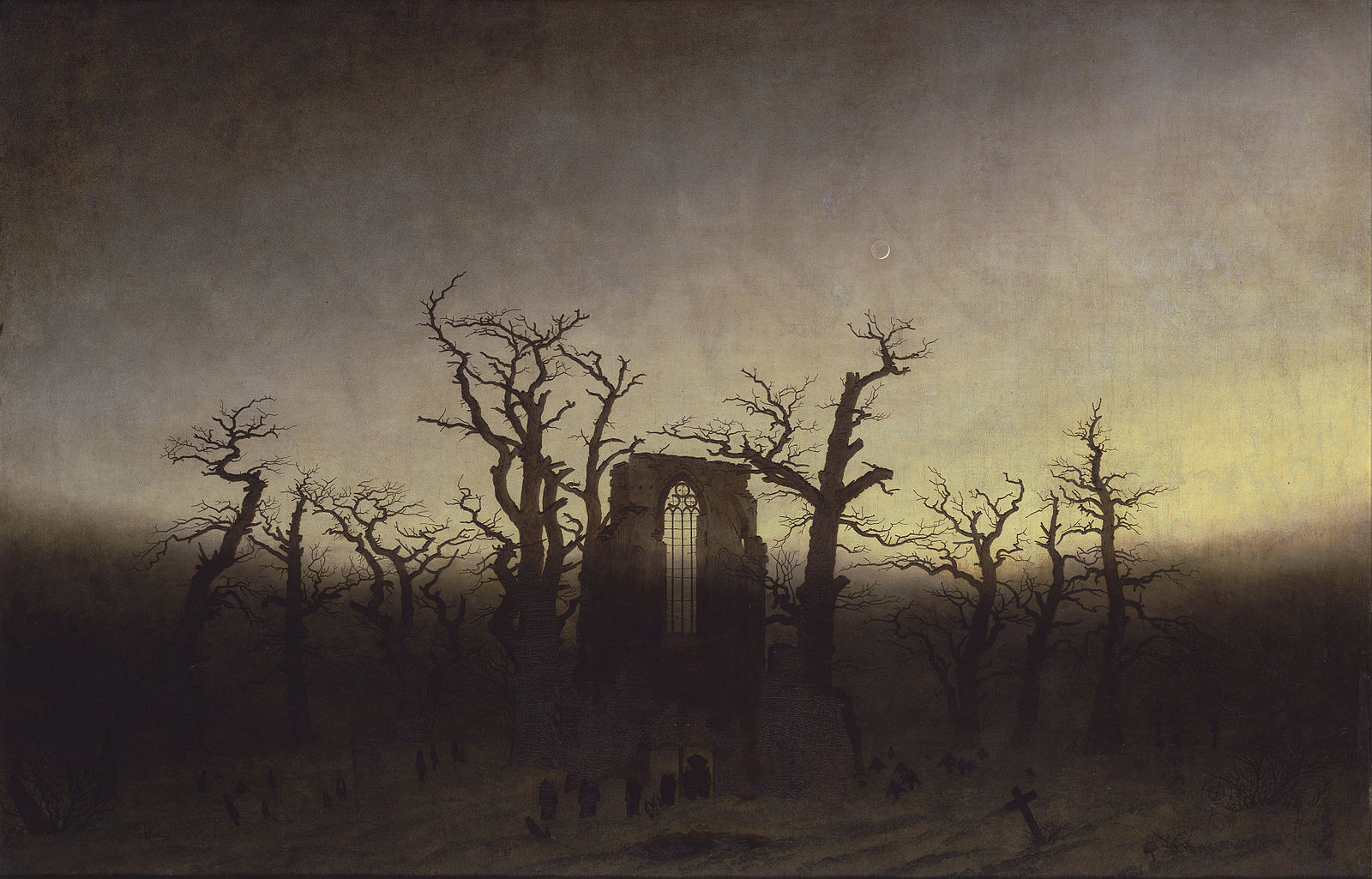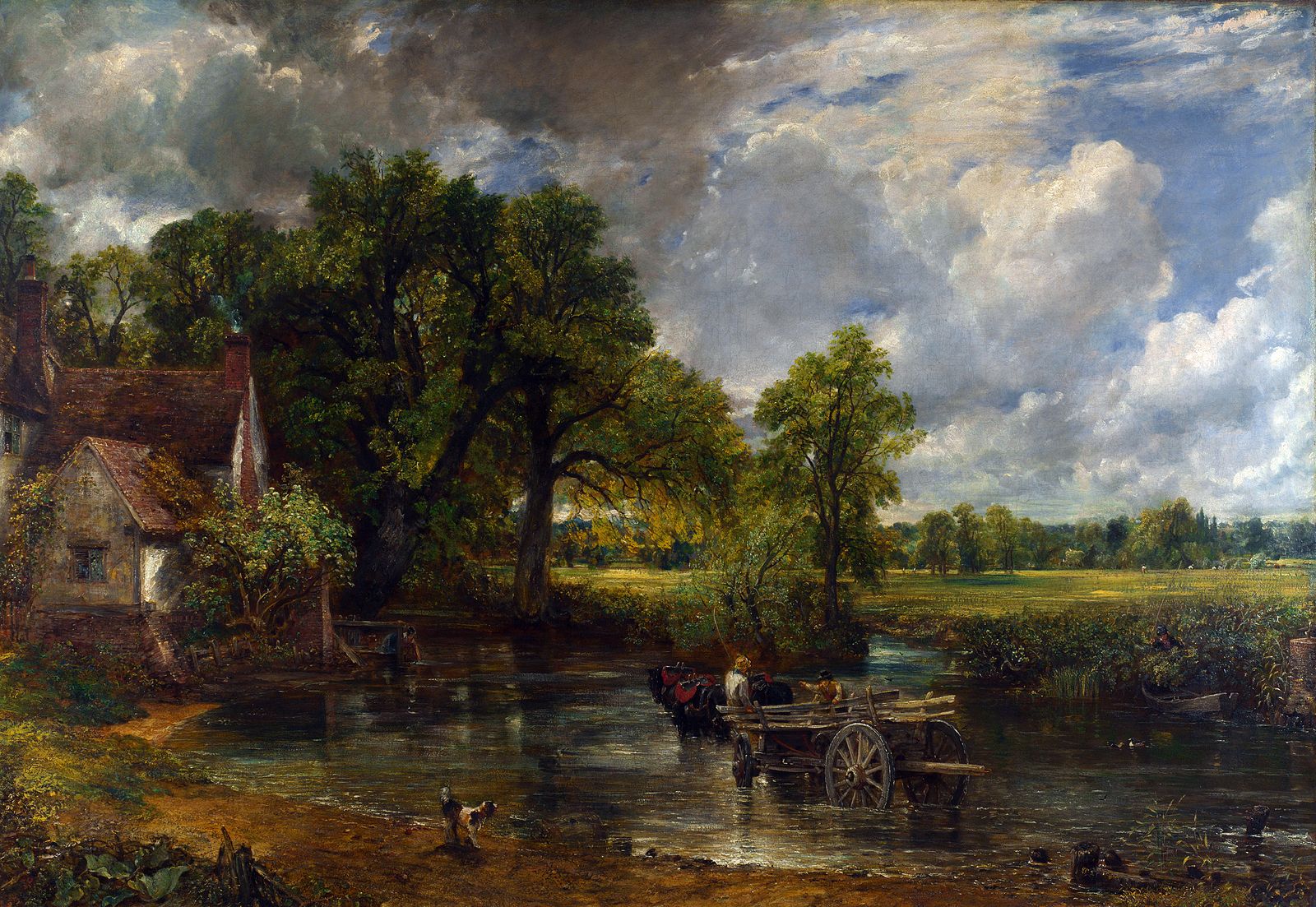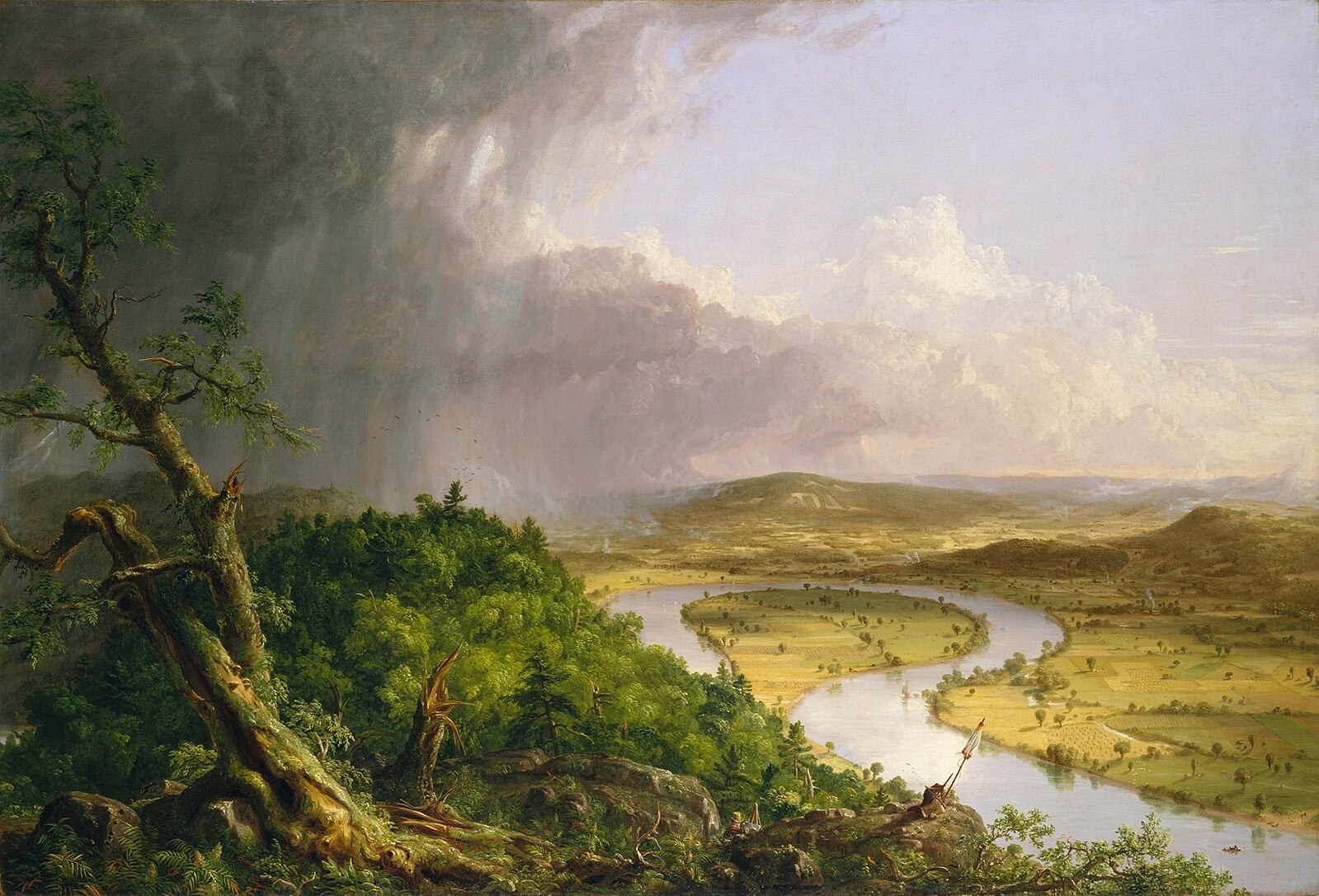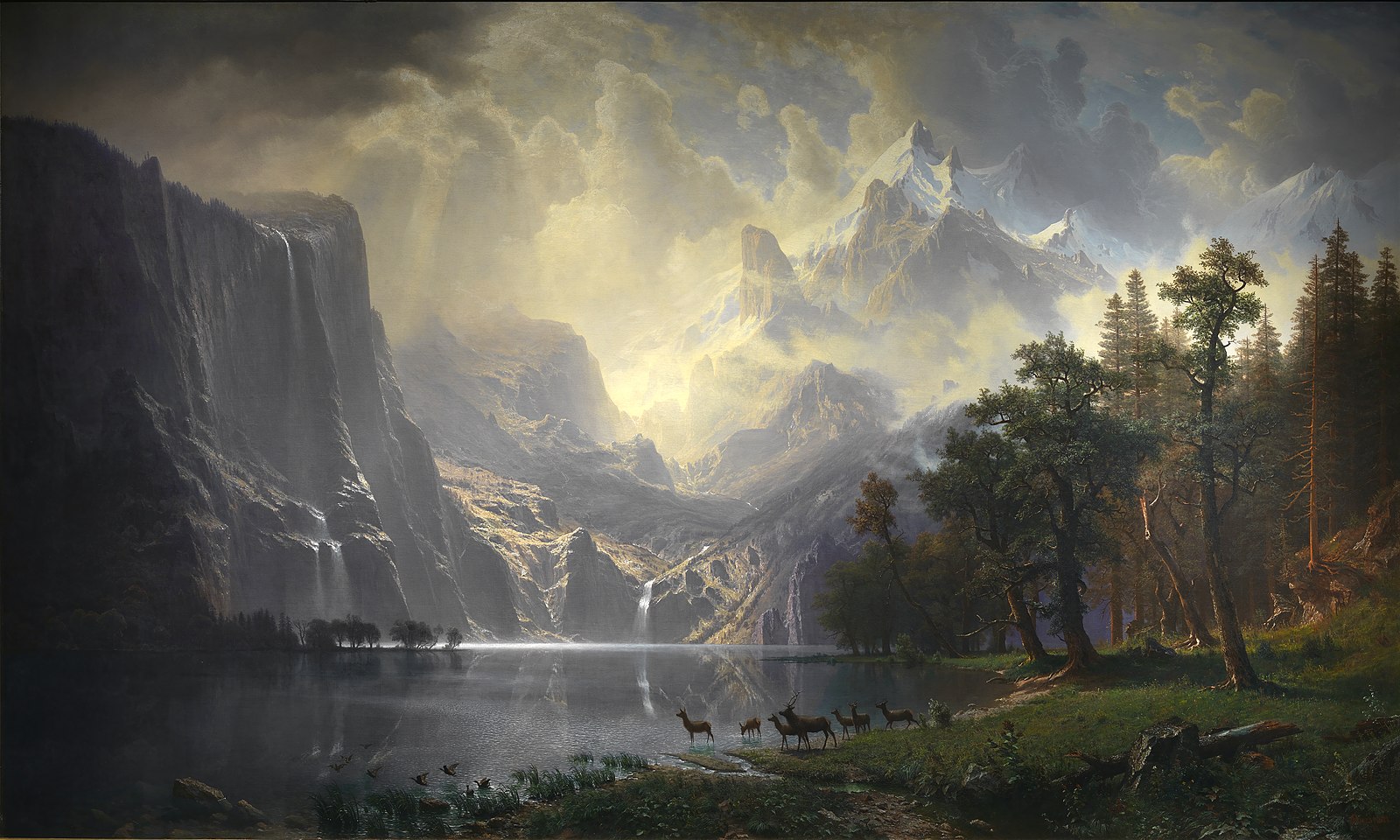Table of Contents |
Landscape painting became a significant element of Romanticism, serving as a metaphor for the unification of the soul with the natural world. This concept aligns closely with transcendentalist belief—a belief in the inherent goodness of people and nature.
The artwork that you will be looking at today dates from 1799 to 1836 and focuses geographically on three locations: Dresden, Germany; London, England; and New York, the United States.
Romantic landscape painting is a genre that embodies the ideals of the Romantic movement, applying them specifically to the depiction of natural scenes. Romanticism—a cultural and artistic movement that emerged in the late 18th century—emphasizes emotion, individualism, and the beauty and power of nature. When these ideas are translated into landscape painting, several distinct characteristics and themes emerge:
What makes a Romantic landscape painting different from other types of landscapes? Well, remember that Romanticism and Dark Romanticism are genres of art that embody the concept of the sublime—this is a key theme in Romantic artwork. Also, in the case of Dark Romanticism, the notion of decay and death permeates throughout the artwork.
This first painting is a great example of the importance of the incorporation of ruins into a picturesque landscape painting. This entire German landscape is evocative of death: humans, nature, and even the seemingly eternal construction of a church—in this case, from the medieval Gothic period. None of these things last forever. It’s a sober reminder of the inevitability of death, but it also shows the interconnectedness of all things. The setting is stark but beautiful, pitting the age of the ruins, the old and gnarled trees, and the wilting gravestones against the freshness of the snow surrounding them. Ruins were thought to be especially picturesque, and Friedrich painted several similar scenes in his career.

The Abbey in the Oakwood
Alte Nationalgalerie, Berlin
1809–1810
Oil on canvas
John Constable’s painting The Hay Wain is a visual ode to the pastoral and idyllic English countryside. Constable believed that paintings that depicted landscapes were as important as history paintings, and this work was a carefully constructed nostalgic view of a small family farm.

The Hay Wain
National Gallery, London
1821
Oil on canvas
The scene is ominous, depending on your perspective. The cultural impact of the Industrial Revolution was evident; Constable felt uneasy about the transformation of the English countryside, with more and more small farms vanishing from the landscape.
The Hudson River School wasn’t an official school or institution in the traditional sense. Rather, it refers to a group of artists who shared a similar vision and method of painting—with the emphasis still on the sublime but in a different manner than the examples you’ve seen so far. This group of artists is known particularly for their dramatic scenes of the American wilderness, such as this painting, called The Oxbow, by Thomas Cole.

View from Mount Holyoke, Northampton, Massachusetts, After a Thunderstorm—The Oxbow
Metropolitan Museum of Art, New York
1836
Oil on canvas
American landscapes lacked the ancient ruins of the landscapes of Europe, so Cole argued that the breathtaking features of the American wilderness should be considered its natural ruins. He further enhanced the sublime beauty of the scene by his composition and through the quick retreat of the foreground off a steep cliff, which forces your attention back to the landscape. The recession of a passing storm into the background also contributes to this feeling of awe.
Nineteenth-century American Romanticism and its subject matter correlated with the westward movement into a new frontier and the growth of a young nation. The justification for territorial expansion as a means of promoting and defending democracy can be summarized in the widely held belief or doctrine known as Manifest Destiny, which is essentially man’s (specifically, European man’s) divine right to expand his possession of land.
Though he actually painted the work below in his studio in Rome, Albert Bierstadt’s painting of the Sierra Nevada Mountains is an expression of Manifest Destiny. Bierstadt was part of the Hudson River School and traveled west as part of several expansion journeys. His beautiful paintings exhibit the Hudson River School’s quality of luminism, in which they almost glow in the way they depict light. It’s a rather amazing characteristic of these works of art, creating an almost divine presence within the painting that enhances the sheer awe of such an impressive landscape.

Among the Sierra Nevada Mountains, California
Smithsonian American Art Museum, Washington, DC
1868
Oil on canvas
Source: THIS TUTORIAL WAS AUTHORED BY IAN MCCONNELL AND TAMORA KOWALSKI FOR SOPHIA LEARNING. PLEASE SEE OUR TERMS OF USE.